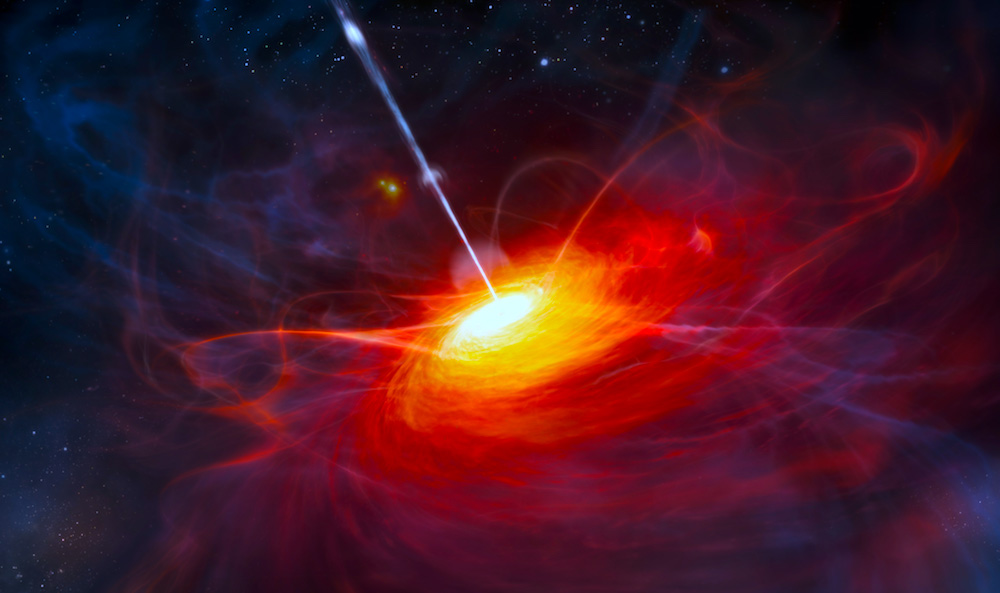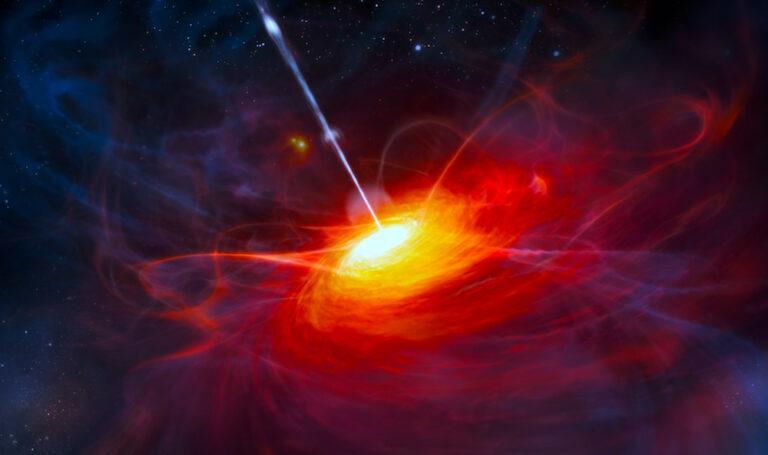Can Highly Reddened Quasars Suppress Star Formation?
Galaxies were formed and expanded billions of years ago through the accumulation of gas from their surroundings or through collisions and mergers with other young galaxies. During these early stages of galaxy assembly, there were periods of intense star formation called starbursts, as well as rapid growth of a single super-massive black hole at the center of the galaxy.
According to a widely accepted model, these black holes primarily grew in obscurity, hidden deep within dusty gas. These galaxies were rich in star formation until a sudden release of gas and dust, known as an outflow, occurred. This outflow extinguished the star formation and halted further growth in the black holes. As a result, a luminous and rapidly growing black hole in the galactic nucleus was revealed, which is known as a quasar.
Quasars have the ability to expel material at high speeds, potentially aiding in the blowout of gas and regulating star formation in their host galaxies. However, there are still many aspects of this evolutionary process that remain unknown. Quasars that are partially obscured by dust, causing their light to appear redder, similar to the sun during sunsets on Earth, may offer insights into galactic evolution during the transitional phase when the starburst is winding down and the visibly luminous quasar is first emerging in the galactic center.
A recent study led by Frederick Hamann, a professor at the Department of Physics and Astronomy at the University of California, Riverside, has uncovered a unique population of extremely red quasars. The findings of this research have been published in the Monthly Notices of the Royal Astronomical Society.

Hamann’s work, along with previous research conducted by Hamann and others, details the discovery of a new group of extremely red quasars found in the Baryon Oscillation Sky Survey (BOSS) of the Sloan Digital Sky Survey (SDSS).
The primary objective of this study was to determine the size of the population of extremely red quasars and compare their fundamental characteristics to the much larger population of quasars in the overall BOSS-SDSS survey.
The selection of extremely red quasars for investigation was based on their unique color, but the analysis conducted by Hamann and his colleagues revealed several distinct properties that suggest a singular and potentially youthful evolutionary stage. Notably, these quasars exhibit a significantly higher occurrence of powerful outflows driven by quasars, which could potentially lead to widespread expulsion of gas and dust throughout galaxies.
In general, the gaseous environments surrounding these black holes appear to be more expansive and energetic compared to those of typical quasars. This phenomenon may occur during specific periods when young galaxies rich in gas deposit substantial amounts of matter into their central black holes, resulting in the emergence of an extraordinary and extreme variety of quasars.Further research is now required to delve deeper into the population of extremely red quasars and comprehend its connection to the broader phenomenon of quasars, and possibly, to a particularly turbulent phase of quasar-galaxy evolution.
This article is republished from PhysORG under a Creative Commons license. Read the original article.
Do not forget to share your opinion with us to provide you with the best posts !




0 Comments